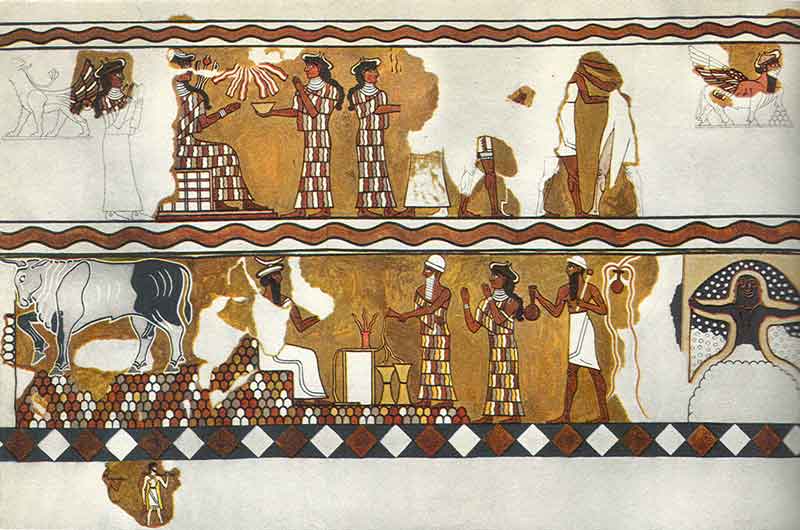Koichos
Pro
Conversion has been a factor since (and is the very essence of) the coalescence of the Jewish nation 3,332 years ago. That does not substantiate Elhaik's conclusions on the genetic and linguistic origins of Ashkenazim and Yiddish, both of which are untrue.This is based on recent data, data that is in support with older data. Let's not play games. You yourself stated earlier on that conversion has been a dominant factor. It can't be both and it isn't both.
This is what is published, which can be found in the paper. And there is a newer paper out confirming even more, which is all in support of earlier papers like "Avshalom Zoossmann-Diskin - The origin of Eastern European Jews revealed by autosomal, sex chromosomal and mtDNA polymorphisms".
(Xue et al., 2017)

(Behar et al., 2013)
(Ostrer, 2013)
(Campbell et al., 2012)
(Behar et al., 2010)
(Shen et al., 2004)
(Botticini and Eckstein, 2003)
(Hammer et al., 2000)

(Behar et al., 2013)
Finally, the fifth and largest Jewish group unites Ashkenazi, North African, and Sephardi Jews. While these populations do differ slightly in the proportions of clusters k2 (light red), k4, and k5, their genetic similarity is striking. Minimal distinction is visible between the Western and Eastern Ashkenazi Jews, but a minutely elevated membership is visible in the Eastern Ashkenazi group for the largely East Asian clusters k9 (yellow) and k10 (orange) . . . For the Jewish populations included in a large group containing Ashkenazi, North African, and Sephardi Jews, most of the populations with the highest similarity of cluster membership coefficients are other Jewish populations . . . The similarity of the genetic membership proportions suggests a common origin of the Jewish populations in this group and limited or comparable levels of admixture with closely related host populations . . . considering the Ashkenazi Jewish population in relation to other populations, Ashkenazi Jews show the greatest genetic similarity to Sephardi Jews and, to a lesser extent, North African Jews.
(Ostrer, 2013)
By principal component analysis, it was observed that the Jewish populations of Europe, North Africa, and the Middle East formed a tight cluster that distinguished them from their non-Jewish neighbors (Fig. 1). Within this central cluster, each of these Jewish populations formed its own subcluster. The observation of a major central tight cluster was supported by statistical metrics for genetic distances (Fst, allelic sharing distances). Nearest neighbor-joining analysis robustly supported shared origins of most Jewish populations with clearly discernible European/Syrian/North African and Middle Eastern branches. Turkish, Greek, and Italian Jews shared a common branch, with Ashkenazi and Syrian Jews forming connections to this branch. The North African Jewish populations added a sub-branch to the European/Syrian branch . . . Notably, the degree of sharing between Jewish populations was also greater than the sharing between Jewish and non-Jewish populations. These studies showed that Jews have a tapestry of shared DNA threads with other Jews and that no one thread is sufficient to define Jewish ancestry.
(Campbell et al., 2012)
Two major subgroups were identified by principal component, neighbor joining tree, and identity-by-descent analysis—Moroccan/ Algerian and Djerban/Libyan—that varied in their degree of European admixture. These populations showed a high degree of endogamy and were part of a larger Ashkenazi and Sephardic Jewish group . . . using genome-wide SNP and copy number variation data, we demonstrated that Sephardic (Greek and Turkish), Ashkenazi (Eastern European), and Mizrahi (Iranian, Iraqi, and Syrian) Jews were more related to each other than to their non-Jewish contemporary neighbors (16). We showed that this relatedness could be explained on the basis of sharing DNA segments identical by descent (IBD) within and between populations . . . A global study of Jewish population genetics from 2010 partitioned most Jewish genomes into Ashkenazi–North African–Sephardic, Caucasus–Middle Eastern, and Yemenite subclusters.
(Behar et al., 2010)
Most Jewish samples form a remarkably tight subcluster that overlies Druze and Cypriot samples but not samples from other Levantine populations or paired Diaspora host populations. In contrast, Ethiopian Jews (Beta Israel) and Indian Jews (Bene Israel and Cochini) cluster with neighbouring autochthonous populations in Ethiopia and western India, respectively, despite a clear paternal link between the Bene Israel and the Levant. These results cast light on the variegated genetic architecture of the Middle East, and trace the origins of most Jewish Diaspora communities to the Levant.
An illustrative example at K = 8 (Fig. 3 and Supplementary Note 3) is the pattern of membership of Ashkenazi, Caucasus (Azerbaijani and Georgian), Middle Eastern (Iranian and Iraqi), north African (Moroccan), Sephardi (Bulgarian and Turkish) and Yemenite Jewish communities . . . which is similar to that observed for Middle Eastern non-Jewish populations, suggesting a shared regional origin of these Jewish communities. This inference is consistent with historical records describing the dispersion of the people of ancient Israel throughout the Old World. Most Jewish samples, other than those from Ethiopia and India, overlie non-Jewish samples from the Levant (Fig. 1b). The tight cluster comprising the Ashkenazi, Caucasus, Middle Eastern, north African and Sephardi Jewish communities, as well as Samaritans, strongly overlaps Israeli Druze and is centrally located on the principal component analysis (PCA) plot when compared with Middle Eastern, European Mediterranean, Anatolian and Caucasus non-Jewish populations (Fig. 1) . . . These analyses reveal three distinct Near Eastern Jewish subclusters: the first group consists of Ashkenazi, Moroccan and Sephardi Jews.
(Shen et al., 2004)
Comparative sequence analysis was carried out on 12 Samaritan Y-chromosome, and mtDNA samples from nine male and seven female Samaritans separated by at least two generations. In addition, 18–20 male individuals were analyzed, each representing Ethiopian, Ashkenazi, Iraqi, Libyan, Moroccan, and Yemenite Jews, as well as Druze and Palestinians, all currently living in Israel. For the Y-chromosome, all Jewish groups, except for the Ethiopians, are closely related to each other. They do not differ significantly from Samaritans (0.041) and Druze (0.033), but are different from Palestinians (0.163), Africans (0.219), and Europeans (0.111). Figure 2A shows a principal component analysis using population frequencies of the Y-chromosome haplotypes displayed in Figure 1. Samaritans and Jewish populations, except Ethiopian Jews, form a cluster separated from Palestinians and Druze. Ethiopian Jews are related more closely to Africans.
(Botticini and Eckstein, 2003)
Interestingly, studies by biologists and genetics have shown that contemporary Jewish populations show a closer genetic link to Jews from far away locations than to their neighboring non-Jewish populations. This is especially true for the Ashkenazi Jews of eastern Europe who are genetically closer to Jews from the Middle East and North Africa, as well as to other Middle Eastern non-Jewish populations, than to eastern European non-Jewish populations.
(Hammer et al., 2000)
A set of 18 biallelic polymorphisms was genotyped in 1,371 males from 29 populations, including 7 Jewish (Ashkenazi, Roman, North African, Kurdish, Near Eastern, Yemenite, and Ethiopian) and 16 non-Jewish groups from similar geographic locations. Despite their long-term residence in different countries and isolation from one another, most Jewish populations were not significantly different from one another at the genetic level. A multidimensional scaling plot placed six of the seven Jewish populations in a relatively tight cluster that was interspersed with Middle Eastern non-Jewish populations, including Palestinians and Syrians. Pairwise differentiation tests further indicated that these Jewish and Middle Eastern non-Jewish populations were not statistically different . . . despite their high degree of geographic dispersion, Jewish populations from Europe, North Africa, and the Near East were less diverged genetically from each other than any other group of populations in this study.




 Even if you "black" probably sound like a cac
Even if you "black" probably sound like a cac

 ) they will admonish Hitler for his ideology but at times it seems like they agree with him.
) they will admonish Hitler for his ideology but at times it seems like they agree with him. 








